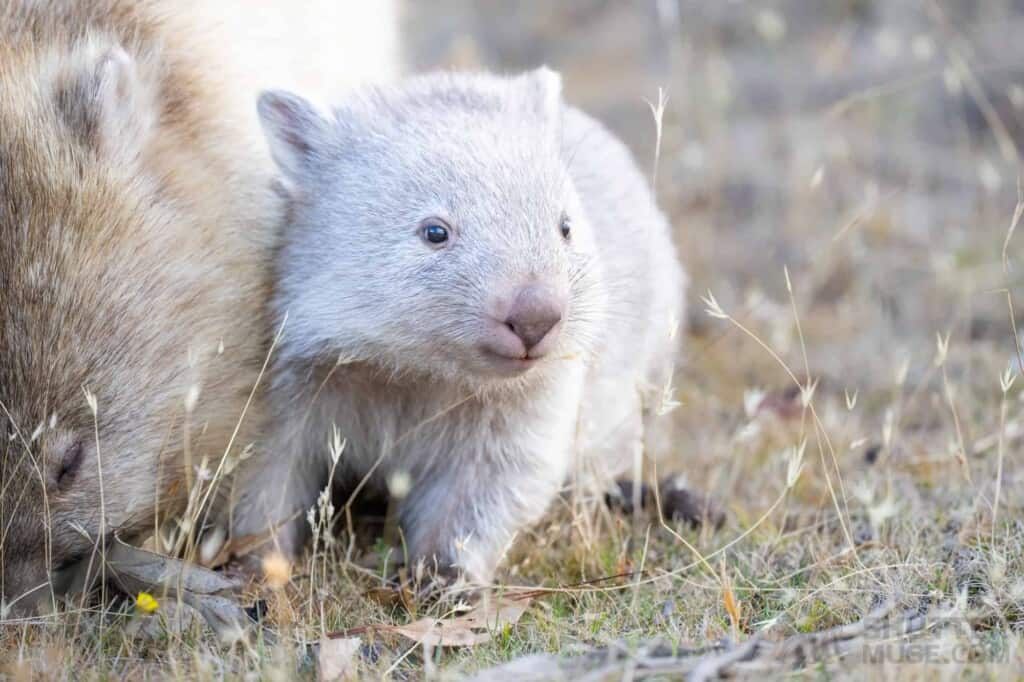
Although I’d never seen a wild wombat until I traveled to Tasmania, they have always been one of my favorite animals. There’s just something about their demeanor and actions that tickle me. In fact, my desire to find and photograph wild wombats was of the catalysts for this particular trip.
Gear Used
- Sony Alpha 1
- Sony 600mm f/4 GM
- Gura Gear Kiboko 30L+ Camera Bag (review)
- ProGrade Digital CFexpress Type B Cobalt Memory Card
- Zemlin Photo Lens Hood
- Zemlin Photo Lens Cap
A full packing list for this trip to Tasmania can be found here.
My wombat search started in South Australia immediately after my flight from Canada landed in Adelaide (via Sydney). My ultimate destination was Tasmania, but some pre-trip research showed a possible location for photographing the southern hairy-nosed wombat (Lasiorhinus latifrons) just a few hours north of Adelaide in a particularly beautiful location. Thankfully, I felt surprisingly fresh after coming off a 20+ hour three-flight travel day, so I grabbed my rental car and drove right away, arriving at my hotel in the Barossa Valley just after sunset. With an alarm set for 4:30 am, I went to bed with my gear by the door.
The Sunrise was spectacular, and the barrage of new smells, flora, and fauna completely overwhelmed my senses. It seems obvious to say it, but everything feels different in Australia, and my brain had a hard time coming to terms with the fact I’d left the frozen sub-Arctic landscapes of the Canadian Yukon less the 48 hours earlier.
I quickly left the tarmac roads behind me and slowly trundled through a tangled web of bush tracks for the next few hours. I love exploring new places when forks in the road are decided with nothing more than a mental coin toss. As long as I had a GPS signal to find my way out, I didn’t care where I went.
Although I did find many wombat dens that morning, my hopes of finding a southern hairy-nosed wombat still awake at sunrise (they are nocturnal) were dashed. Never mind, it was time to move on to Tasmania, where there are healthy populations of common wombats (Vombatus ursinus) if you know where to find them.
Fast forward a few days, and I was on Maria Island off the east coast of Tasmania. A former prison colony, the island is now protected and run by Parks Tasmania. I plan to post about my time on Maria Island in more detail, so stay tuned for that in the coming weeks. Consider this baby wombat photo a teaser for what turned out to be one of the best adventures of my life.
During my first day on Maria Island, I covered 19 miles on foot. There are no cars on the island, and while you can usually rent bicycles, they were unavailable that day due to ferociously high winds. Luckily I’d packed a sturdy set of hiking boots and was determined to cover as much ground as possible during my limited time on the island. As is often the case, the effort paid off, and I encountered this tiny wombat joey munching its way through the scrub with its mother just a few minutes before sunset.
The real challenge with this particular shot was to catch a clear glimpse of the baby between the blades of long grass. Of course, I lay on the ground to create a sense of intimacy you don’t get when shooting down on small animals. However, I was shooting through large patches of long grass between me and my two furry subjects, and catching a clean shot where a blade didn’t obscure their face to some extent, was challenging. In the end, lying down but raising my camera 3-4 inches off the ground provided a little more success, elevating my eye line just above some of the grass and giving me better odds of a clean shot at the right moment.
While I had hoped to find and photograph wild wombats on that trip, I never dared dream of finding a baby, let alone being able to capture it in good light. It was such a thrill to capture these images, and I’m sure I’ll share a few more from this encounter in future posts. I’ve certainly never photographed anything else as cute as this little thing!
BTS Photos








Good for you, Dan! That is a fabulous image of the baby wombat. I’ve never seen one before. Looks almost albino-like with the pink around its eyes and nose. You got it perfect. Can’t wait to see more! Thank-you for posting this!
Thank you, Frances! I definitely have more to come. Still wading through my edits from a fabulous trip!